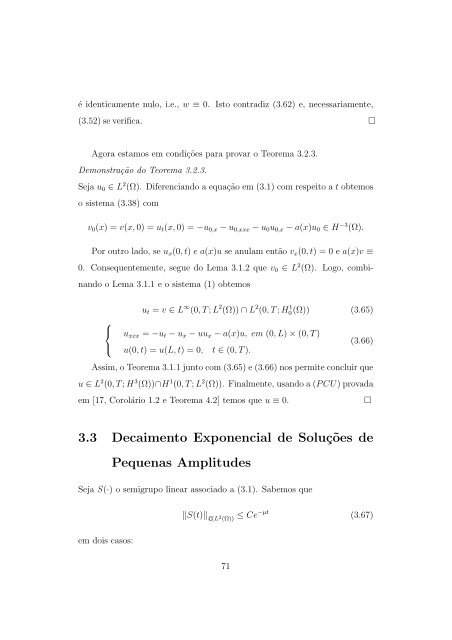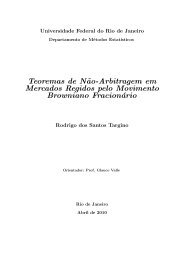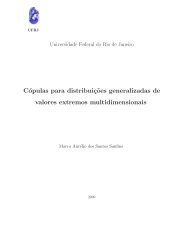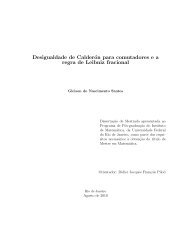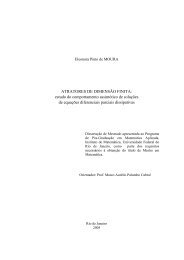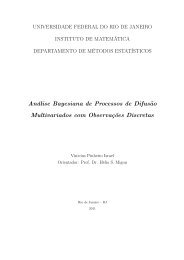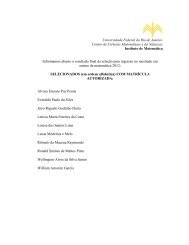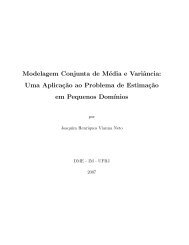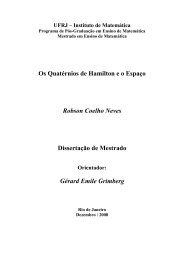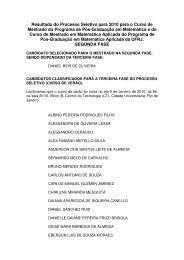Existência, Unicidade e Decaimento Exponencial das Soluç ... - UFRJ
Existência, Unicidade e Decaimento Exponencial das Soluç ... - UFRJ
Existência, Unicidade e Decaimento Exponencial das Soluç ... - UFRJ
You also want an ePaper? Increase the reach of your titles
YUMPU automatically turns print PDFs into web optimized ePapers that Google loves.
é identicamente nulo, i.e., w ≡ 0. Isto contradiz (3.62) e, necessariamente,<br />
(3.52) se verifica. □<br />
Agora estamos em condições para provar o Teorema 3.2.3.<br />
Demonstração do Teorema 3.2.3.<br />
Seja u 0 ∈ L 2 (Ω). Diferenciando a equação em (3.1) com respeito a t obtemos<br />
o sistema (3.38) com<br />
v 0 (x) = v(x, 0) = u t (x, 0) = −u 0,x − u 0,xxx − u 0 u 0,x − a(x)u 0 ∈ H −3 (Ω).<br />
Por outro lado, se u x (0, t) e a(x)u se anulam então v x (0, t) = 0 e a(x)v ≡<br />
0. Consequentemente, segue do Lema 3.1.2 que v 0 ∈ L 2 (Ω). Logo, combinando<br />
o Lema 3.1.1 e o sistema (1) obtemos<br />
⎧<br />
⎨<br />
⎩<br />
u t = v ∈ L ∞ (0, T ; L 2 (Ω)) ∩ L 2 (0, T ; H0(Ω)) 1 (3.65)<br />
u xxx = −u t − u x − uu x − a(x)u, em (0, L) × (0, T )<br />
(3.66)<br />
u(0, t) = u(L, t) = 0, t ∈ (0, T ).<br />
Assim, o Teorema 3.1.1 junto com (3.65) e (3.66) nos permite concluir que<br />
u ∈ L 2 (0, T ; H 3 (Ω))∩H 1 (0, T ; L 2 (Ω)). Finalmente, usando a (P CU) provada<br />
em [17, Corolário 1.2 e Teorema 4.2] temos que u ≡ 0.<br />
□<br />
3.3 <strong>Decaimento</strong> <strong>Exponencial</strong> de Soluções de<br />
Pequenas Amplitudes<br />
Seja S(·) o semigrupo linear associado a (3.1). Sabemos que<br />
‖S(t)‖ L(L 2 (Ω)) ≤ Ce−µt (3.67)<br />
em dois casos:<br />
71


